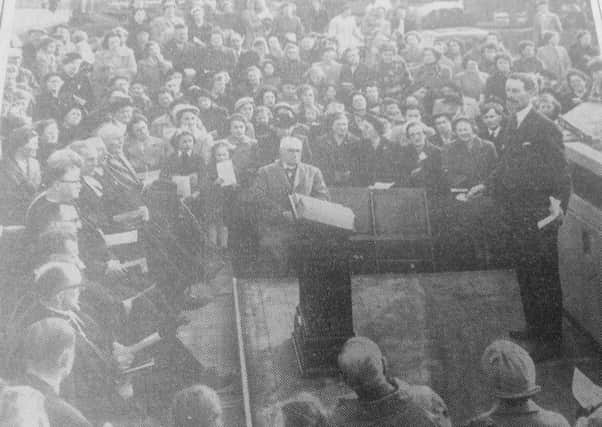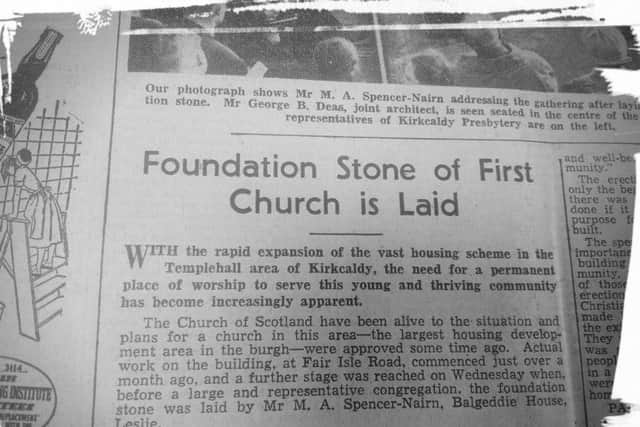Nostalgia 1955: Building a new church in Templehall


Templehall began to expand in the 1950s, quickly becoming the largest in the burgh.
April 1955 saw the foundation stone of Templehall Parish Church laid to become the area’s first permanent place of worship to serve what the Fife Free Press called ‘’a young and thriving community.’’
Advertisement
Hide AdAdvertisement
Hide AdThe ceremony marking the occasion was as dignified as you’d expect, with the emphasis firmly on bringing families up in a Christian household.


Work on the building, at Fair Isle Road, began in March 1955. The next significant stage was reached in April when, before a large and representative congregation, the foundation stone was laid by Mr MA Spencer-Nairn, Balgeddie House, Leslie.
The eventual building would seat 500 people and was expected to be completed within the year – future plans included adding a hall, and a tower.
Wednesday’s ceremony took place in excellent spring weather before a gathering which included representatives from Kirkcaldy Presbytery, members of the congregation of Templehall Church, and many members of the general public.
Advertisement
Hide AdAdvertisement
Hide AdThe Press reported that housewives in flats overlooking the site “took time off their chores to watch the ceremony from the balconies of their recently completed homes.”


Immediately prior to the laying of the foundation stone, Mr Spencer-Nairn was presented with a trowel, suitably inscribed, by Mr George B Deas, architect to Kirkcaldy Presbytery who, along with Mr Harry Hubbard, prepared the plans for the new building.
The stone formed part of the eastern wall of the chancel, and the prayer dedication was also offered by the Rev Horace Walker, secretary depute of the Home Board.
A metal box which contained newspapers, stamps, coins, copies of the 15th Psalm and list of the contractors engaged on the project was placed inside a cavity in the foundation stone by James Brindle, session clerk of Templehall Church.
Advertisement
Hide AdAdvertisement
Hide AdMr Spencer-Nairn said that there was much work to be done, and went on to address the importance of home influence in the building of a Christian community.
He said it was generally agreed that young people, of whom there were many in Templehall, were tremendously influenced by home life.
Mr Spencer-Nairn added: “We must be prepared not only to send our children to Sunday school, but discuss with them their religious subjects, to help them in the sayings of their prayers, and I would go so far as to suggest, say prayers with them.
He said they were “very susceptible” to good or evil adding: “Unless they have moral support which can come from Christian homes, they will fall to the temptations which surround them.”
Advertisement
Hide AdAdvertisement
Hide AdThat same month, the Press highlighted the arrival of rock ‘n’ roll, and the introduction of jive classes at the Burma – underlining the times were indeed a-changing.
He spoke of the influence that church members could bring in the community, and how it was their duty to talk and reach out to those who were more indifferent to religion .
“Why should we be shy of our convictions?” he asked.
The service was conducted by the Rev John A Nisbet, Kinghorn, Moderator of Kirkcaldy Presbytery, and lessons were read by the Rev John Huskie, minister of the new parish, and Mr James Dougall, lay missionary at Templehall.